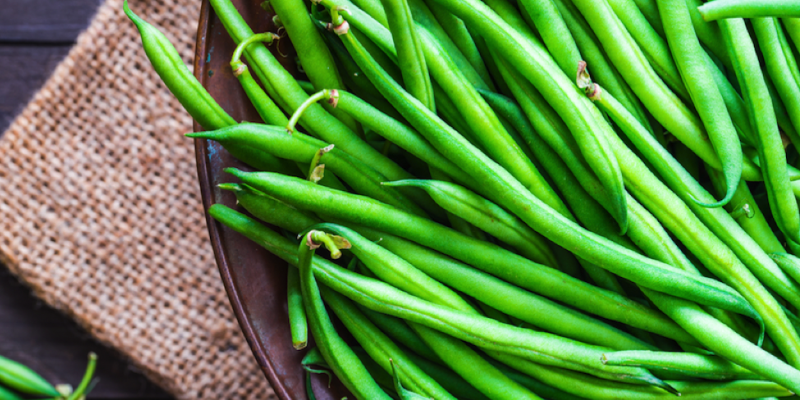Spotlight on Beans
Protein not only comes from animal sources but they can come from plant sources too. One of the best sources of protein in the veggie world are beans also known as legumes. In this post, we want to talk about beans and share some health benefits and tips for selection and storage to make sure you’re getting the most out of this delicious vegetable in your diet.
Dishes featuring Beans
There are many beans to choose from – black beans, kidney beans, garbanzo beans, pinto, Cannellini, Lima, Mung and Navy beans…
- Serve them as beans on toast (an English favourite).
- Add a bit of Mexican flare to your dish – tuck beans into tortillas or pita bread.
- Add them to soups, salads or pasta dishes. Chickpeas are great in place of noodles in minestrone soup.
- Heat a can of white or cannellini beans with a can of diced no-salt-added tomatoes (juices included) and some Italian herbs and seasons – this makes a delicious side dish best paired with chicken or fish,
Healthy Snapshot
- Across all groups of food eaten all over the world, no group has a more health-supportive mix of protein plus fibre than legumes. The almost magical protein-fibre combination in legumes is unfound in another other fruit, vegetable, grain, meat, dairy product, nut, seed or seafood.
- Blood sugar regulation: Beans have low glycaemic index, they also have “protein-plus-fibre” combination which means they are digested slowly and therefore a great support for blood sugar balance and blood sugar regulation.
- Digestive tract benefits: Unlike dietary sugar, which can move very quickly through the digestive tract and out of the digestive tract into the bloodstream, or dietary fat, which can move very slowly through the digestive tract and out of the digestive tract into the lymphatic system or bloodstream, both protein and fibre (beans) can move through the digestive tract at a moderate pace. Because beans are metabolised more slowly than other complex carbs, they may aid in weight loss by keeping us feeling full without being excessively high in calories.
- Heart Conscious: Beans are “heart healthy” because they contain an abundance of soluble fibre, which can lower cholesterol and triglyceride levels. If you prefer canned beans, you can ditch up to 40 percent of the sodium by rinsing them in water.
Tips for Selection and Storing
- Both dried and canned black beans are available throughout the year. Dried beans are generally available in pre-packaged containers as well as in bulk bins.
- Canned beans can be found in most supermarkets and unlike canned vegetables, which have lost much of their nutritional value, there is little difference in the nutritional value of canned beans and those you cook yourself.
- If possible, purchase green beans fresh at a store or farmer’s market. Purchase beans that have a smooth feel and a vibrant green colour, and are free from brown spots or bruises. They should have a firm texture and “snap” when broken.
- Store unwashed fresh bean pods in the fridge, they can be kept there for 7 days.
